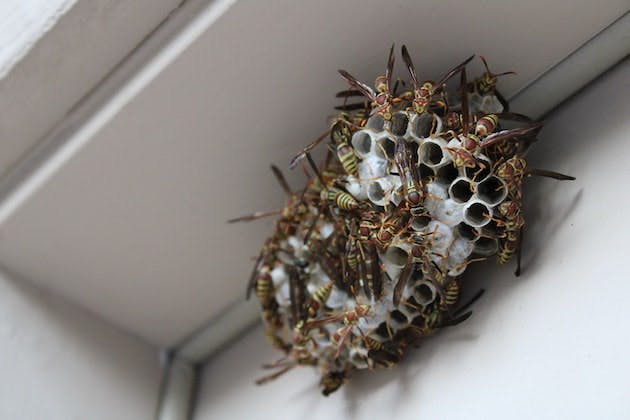Living in the UK, you may not be aware of this, but there are many different kinds of wasps all around the world! And while most of them are inhabited in the Americas, we are going to have a go at explaining what the different types of wasps are as well as their size and features in this blog post.
Wasps and their relatives, hornets and yellowjackets, contain venomous stings that can be deadly to those who are allergic to them. Even if you are not allergic to wasps, they can be dangerous if you come too close to their nest. They will burst forth, frequently in vast numbers, and sting any human or creature who is around. If you have a wasp infestation in your home, get in touch with our wasp control specialists here at Pegasus Pest Solutions, and we'll have that wasp nest treated in no time!

Types of Wasps
Yellowjacket wasps
Yellowjackets are bee-sized wasps distinguished by their black and yellow markings. They are found all across the world but are most widespread in the southeastern United States. Adults reach a height of three to five eights of an inch. To safeguard the group, they live in colonies and make nests within buildings or on the ground.
Paper wasps
Paper wasps are slightly bigger than yellow jackets, measuring three-quarters of an inch to one inch in length. They have brown or black bodies with yellow to red patterns. They are found all throughout North America and frequently establish their nests near the protection of structures. Their nests are tiny, with only one layer of comb for brood raising. They, like other wasp species, will not sting unless threatened. Paper wasps are brown and yellow, but yellow jackets are black and yellow.
Hornets
There are around 20 different species of hornets around the globe. In California, the varieties often reach a height of 1.25 inches. They are often black in colour with bright yellow or white stripes that are more pronounced than those found in yellow jackets. Hornets form colonies by chewing wood into a papery pulp and utilising it to build walls. Most nests are made on tall trees or woody plants. These wasps are extremely sociable and will not sting unless threatened or provoked. They swarm when they are threatened.
Mud Daubers
Mud daubers are about half an inch to one inch long. They are dark in colour, with brilliant yellow patterns on their thorax and legs, and have a long, slender body that distinguishes them from other wasp species. They are native to North America but may be found all around the world. They do not dwell in colonies or build nests with other wasps, unlike the other wasps on this list. Mud daubers, on the other hand, utilise mud to construct little nests for themselves and their progeny. They are a peaceful species that do not swarm like other wasps.

FAQs
Are all wasps aggressive?
No, while some species like yellow jackets exhibit aggressive behaviour, others such as mud daubers are relatively docile unless threatened.
How can I differentiate between wasp species?
Pay attention to physical characteristics such as size, colouration, and nest structure. Consulting with local experts can also aid in identification.
What should I do if I encounter a wasp nest near my home?
It's advisable to contact professional pest control services for safe removal, especially if the nest poses a threat to you or your family.
Are wasps beneficial to the environment?
Yes, wasps play crucial roles in controlling insect populations, pollination, and ecosystem balance.
Can wasp stings be fatal?
While rare, severe allergic reactions to wasp stings can be life-threatening. It's essential to seek medical attention if you experience symptoms such as difficulty breathing or swelling.
How can I deter wasps from nesting near my home?
Taking preventive measures such as sealing potential entry points and maintaining cleanliness can discourage wasps from establishing nests on your property.


